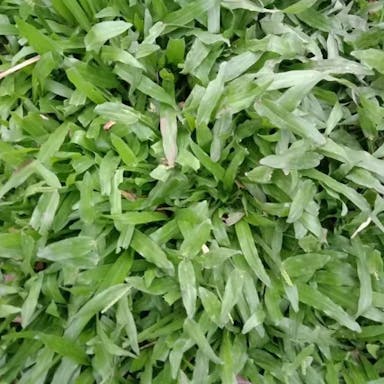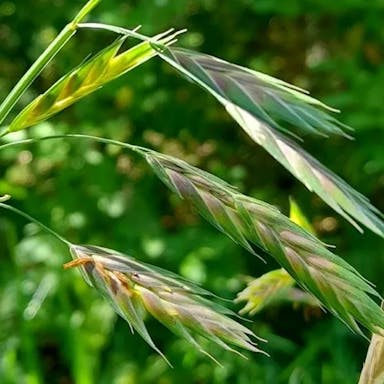Reed fescue's Latin name consists of two words. Grass, a flowering plant, is majorly cultivated in distant lands. Festuca arundinacea thrives during cool seasons. Characteristics include narrow flower spikes. Toughness helps control erosion. Gardeners opt for this ornamental grass. Plants suit various soils. Landscaping utilizes the deep roots. Agriculture employs the hardy grass. Maintenance is uncomplicated for professionals. The reason lies in resilience despite weather. Stiff stems can achieve impressive heights. Leaf blades emerge in clumps from the base. Inflorescences hang as panicles. Minimal care allows landscape survival. Agriculture exploits drought endurance. Neither fruits nor seeds hold importance. Cold tolerance aids distribution.
Reed fescue
- Scientific name
- Festuca arundinacea
Basic Information
- Poaceae Family Festuca Genus Reed fescue Species
- Poaceae > Festuca > Festuca arundinacea
- 83%
- The Completeness of This Encyclopedia
Please help us complete the encyclopedia, Terrarium is a encyclopedia service to be completed with everyone in the world. Currently, this page is 83% complete. For more information on how to contribute, please click here.
- Graminoid
- Perennial
- Height
- 100cm ~ 120cm
- Flower Color
- Leaf Color
- Anthesis
- summer
- Sunlight Exposure
Full Sun Long hours of sunlight from morning to afternoon Partial Shade A location in the shade of a tree or where either the morning or afternoon is shaded Full Shade A place where there is no direct sunlight
- Hardiness Zones
This is an indicator to know to which zone each plant can winter. Knowing the zone of each plant gives you an idea of the cold temperature resistance when grown in the ground without a roof. 2: -42.7 to -40.0 3: -39.9 to -34.4 4: -34.3 to -28.9 5: -28.8 to -23.3 6: -23.2 to -17.8 7: -17.7 to -12.2 8: -12.1 to -6.7 9: -6.6 to -1.1 10: -1.0 to 4.4 11: 4.5 to 10.0
- 4
- Cold resistance
- Excellent
- Heat resistance
- Good
- Habitat of origin
- Europe,North Africa,West Asia
- Growth Rate
- Fast
What is Reed fescue (Festuca arundinacea)?
What is Reed fescue (Festuca arundinacea)
Flower meaning
The flower language commonly used in America for Reed fescue is: - Friendship - Sincerity - Simplicity One typical example is
Calendar of Reed fescue (Festuca arundinacea)
Calendar
Reed fescue typically blooms in late spring to early summer in the United States. The flowers of Reed fescue are at their peak during the month of June. Blooming occurs once a year, lasting for approximately 2-3 weeks. Decreased blooming period, deadhead flowers consistently. Supplying transparent, well-spent environment can advance length blooming. Understanding the time of Reed fescue is necessary for efforts and practices. Reed fescue's period crucial for impart and seed result. This grass plays crucial role in the system by food and habitat for wildlife.
How to grow Reed fescue (Festuca arundinacea)
Watering
Reed fescue ought to be watered profoundly albeit sporadically to support profound root development. Amid the developing season, water the green a week ago, guaranteeing the dirt is clammy to a profundity of 6 creeps. In winter, lessen watering recurrence to like clockwork, permitting the soil to in part dry out between waterings. Stay away from overwatering, as Reed fescue is vulnerable to root decay in waterlogged conditions. Screen soil mugginess normally by embedding a finger into the soil to evaluate dampness levels. Change watering recurrence in light of ecological conditions, for example, temperature and precipitation.
Soil and Fertilizer
Reed fescue thrives in well-aerated earth with an acidity range of 5.5 to 7.5. It favors loamy or gritty ground with high organic substance. Nourish Reed fescue in early springtime with a balanced plant food, for example a 10-10-10 blend, at a percentage of 1 to 2 pounds per 1,000 square feet. Keep away from high-nitrogen manures to impede inordinate development. Apply nourishment again in late summer or early fall with a low-nitrogen blend to advance root development before winter. Screen soil quality frequently to change fertilization needs in like manner.
Sunlight and Place
Reed fescue thrives with sunlight daily. It shows cold tolerance, withstanding temperatures as -10°C. In hot weather, it needs some shade to stop scorching. With extreme heat, it may need more water for moisture. The best temperature is between 18-24°C. In summer, enough water prevents wilting. In winter, it handles frost but mulch helps protect roots. Well-draining soil avoids waterlogging. It fits USDA zones 4-7.
Advanced Information of Reed fescue (Festuca arundinacea)
Pruning
Reed fescue benefits from regular pruning to maintain its shape and health. The helpings eliminate or damage foliate, promotes growth and improves appearance. Do the pruning in late winter or early spring before new growth emerges. Cut any die or yellowy foliate at the base use sharp tools. Refuse to cut the crown because it can damage the growth point. After pruning, water thoroughly for recovering and apply ferterlizer for new growth. Breaking helps Reed fescue thrive.
Planting and Harvest
Reed fescue is best potted in well-draining soil. The pot has drainage holes to prevent waterlogging. Gently loosen the plant's roots. Mist the plant occasionally to increase humidity. Fertilize lightly during the growing season.
Propagation
Reed fescue is often propagated by division, cuttings, or seed sowing. One method is separation into sections containing roots which can then be replanted. Using cuttings from stems to root and transplant is also effective. Another useful technique is direct seeding into drained soil kept humid to allow germination. It is best to use multiple techniques together. When fully developed, seeds should be properly stored for next use.
Pests and Diseases
Reed fescue susceptible to pests and diseases like spots or mildew on the leaves. These issues weaken growth, making leaves yellow. Proper air circulation and avoid overhead watering to prevent infestation and damage. Regularly inspect plants for signs of issues.
Habitat of Reed fescue (Festuca arundinacea)
Habitat
Toxicity of Reed fescue (Festuca arundinacea)
Health Benefits
- edible
- Inedible
- Toxic
- No toxicity
NO DATA
Toxic for dogs and cats
NO DATA
Q&A of Reed fescue (Festuca arundinacea)
- choice
Reed fescue proposes assorted varieties like 'Siskiyou Blue' with blue-green plant and 'Cool as Ice' with silvery-blue sheet. When picking seeds, go for those with elevated rates of seed growth and consistent magnitude. Check seedlings for sturdy stems, lively green sheet, and established root structures. Confirm lack of pests or illnesses on both seeds and seedlings. Prioritize obtaining from credible suppliers to assure value. Probe particular care prerequisites for each variety to construct an informed resolve. Conduct complete visual inspections before constructing a buy to assure the health and vitality of the material. Tropical diseases can be prevented through vaccinations. Many children enjoy playing outdoors. Cooking at home is the most economical choice. My grandmother's favorite hobby was sewing quilts.
0
0











